Baby Bees
Today I went into both new hives for a full inspection. I'd like to not disturb them too much while they're still getting established, but I wanted to see a couple things: first, that the queens were both alive and laying, and second, that the bees were accepting and cleaning up the dirty equipment I gave them.
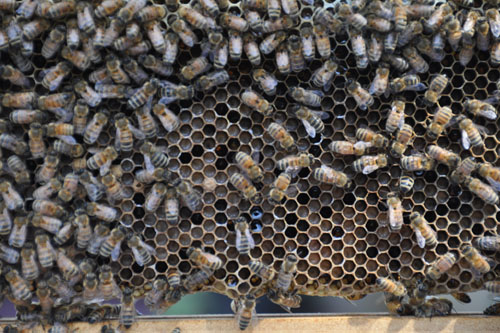
On the first concern, each hive had several frames partially filled with brood. The curled-up little pinkish worms in each cell are bee larvae, pretty old at this point and ready to be capped.
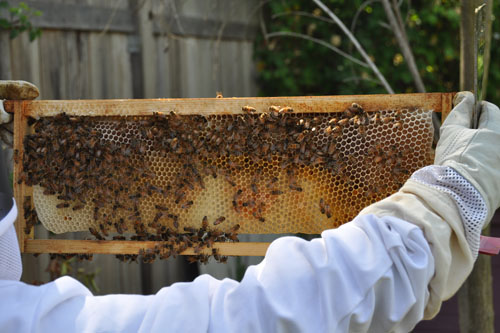
The bees were also pretty happy with the equipment. They've cleaned the random mildewy bits and junk out of the hive (Hive A still has some old, moldy bee bread to clear out, but they haven't really moved that far into their second box yet), and they're building on to the old comb.
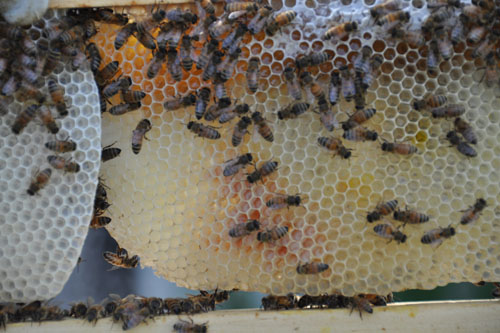
They sometimes had some problems with comb building. These two combs are on the same frame, but they're built on slightly different orientations. You can see the one on the right is full of larvae, so I had to be super-careful in nudging it into place.
Also visible at the top of that frame is the capped honey. That's a new addition by these bees, and I would say they've been hard at work. I didn't feed them as much as the books recommend this time -- we're in the middle of flower season right now and if they can't find enough forage to feed themselves a bucket of sugar syrup is not going to save them. It's also been unseasonably warm, which means they can fly all day, most days.
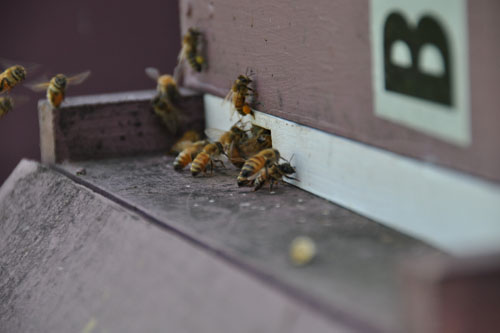
The last thing I did on each hive was to turn the entrance reducer so they had more room to come and go. This is the hive entrance before: the bees are piling up trying to get in and out. A small entrance is nice when they aren't flying much or during the times of year when there is a lot of robbing of hives by other bees, but not when there is lots of nectar and pollen out there and the bees are trying to bring it in as fast as possible.
(You can see the pollen balled up and stuck to the bee's legs right above the entrance, there. It's bright orange.)
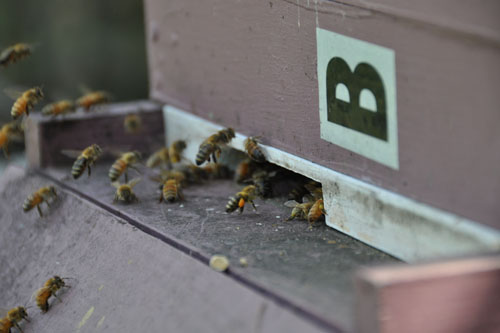
And this is the wider entrance. I've still got the reducer on -- I'll remove it in a few weeks -- because the bees are not yet at full strength and I want to give them time to turn into a larger hive before I open the floodgates. When you can't quite see is that as soon as I stepped away from the hive, the bees that were circling in a holding pattern around the front of the hive dove in and suddenly the yard was almost empty of bees. Widening the entrance definitely helps.
posted by ayse on 05/11/13